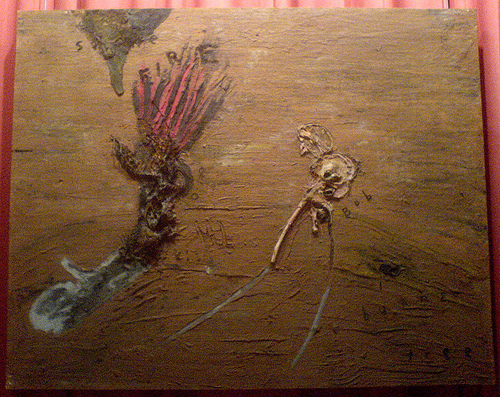The film-maker David Lynch drew and painted incessantly throughout his childhood, never realising until adolescence that art could actually be a career path in the adult world. A chance meeting with the father of a friend, who happened to be a painter, opened his eyes to a new world, and in 1965 – he was nineteen years old at the time – Lynch enrolled in the Pennsylvannia Academy of Fine Arts. Fairly soon after that, his interests gravitated decisively towards the moving image. The story goes that one day he was alone in his studio when a breath of wind stirred some of the several objects half-affixed to a collage he was making. This lucky accident made him think about the nature of his work, and he soon started making short films. In 1966, he made his first, Six Men Getting Sick – “57 seconds of growth and fire, and three seconds of vomit”, as he himself tersely described it. In 1970, he won a grant from the American Film Institute to make The Grandmother, a characteristically surreal 30-minute film about a boy who grows a grandmother from seed. By 1971, he had begun the tortuous process of producing his first feature film, Eraserhead. The rest – including Blue Velvet, Mulholland Drive,
But throughout his life, Lynch has never stopped painting, drawing, taking photographs and engaging in all sorts of miscellaneous other creative activities. To coincide with the release of his latest film,


